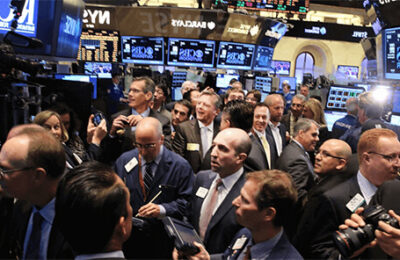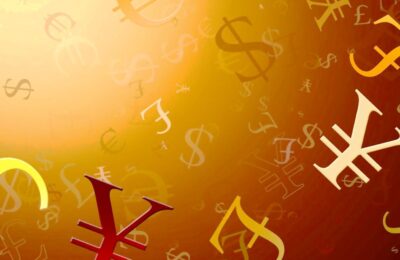Contents

There will be times when the stock price does not move higher after the pattern forms. In these cases, it’s important to use stop-loss orders to manage your risk and have a soundtrading strategyfor getting out. The pattern forms when the asset price drops slightly but then rebounds back to the level at which the fall has started. The points where the price fell and rebounded form a “u” shape, representing the cup. The formation is then followed by a small consolidation or slight pullback with a small downward drift, representing the handle.
The pattern is considered a continuation pattern, with the breakout from the pattern typically occurring in the direction of the overall trend. There are a number of ways you can use to know that the cup and handle pattern has failed. The first one would happen if you have a false breakout. This means that the price would break the resistance and return back under the resistance with a heavy volume. This could be first indication of a reversal in the trend and therefore a failed cup and handle pattern.
William O’Neil’s CANSLIM method shows better performance than the overall market (S&P 500) in backtests, even though it has lagged in recent years. Although we might argue O’Neil is the innovator of the cup and handle strategy, it’s just one part of many in his methodology. We can’t conclude on the profitability of the cup and handle strategy based on the CANSLIM method. You can see the cup and handle pattern that formed between 2005 and 2007.
However, note that cup and handle pattern failure may occur more frequently in overall bearish markets. Always use stops to minimize risk in case of a failed cup and handle pattern. A good time to buy is when the price of the asset moves up and exceeds the price levels seen previously at the top of the right side of the cup. The cup and handle pattern is a bullish pattern, meaning once the pattern is over there are chances for the stock price to increase. ✅This pattern is not as popular among traders as “Head and Shoulders”, “Double Top” and other classic patterns of technical analysis.
Cup and Handle Pattern Trading Strategies
This scan is one way to do it, but really any method that finds stocks that are stronger than average is fine. Whatever the index is up in the last 6 months, this criteria should be more…usually about double. For example, if the S&P 500 is up 3% in the last 6 months, look for stocks that are up 6%+ over the same time frame. I have also shown the stop loss, entry, and profit target via the green and red boxes.
- A bearish cup and handle, or inverted cup and handle, is when a stock is in a downtrend, it has a brief rally and then starts dropping again back toward the prior lows.
- This is a recovery in prices located on the right side of the cup.
- The Cup and Handle pattern confirmation comes when the price breaks above the “handle” — and that’s where you can enter a trade.
- This means that the price found a good support level that it couldn’t drop below for some time.
Your position is not random or based on how strongly you feel about a trade or stock. It is based on the difference between your entry and stop loss, your risk tolerance, and the amount of capital you have. This article describes one type, and the video includes some slight variations. Wait for the consolidation, in the proper spot, and wait for volume to drop off before considering an entry. A trailing stop loss is also effective with this strategy.
Support
The Cup and Handle pattern is a technical indicator that traders use to identify whether the price of a traded security will continue its upward movement. As the name suggests, the chart pattern is shaped like a teacup with a dainty handle when looked at closely. A cup and handle is a bullish technical price pattern that appears in the shape of a handled cup on a price chart.

A cup-and-handle pattern can take place over any period of time. Some patterns emerge during day trading, forming over the course of hours, while others can take shape over the better part of a year. Often the asset’s price will remain at its low point for weeks or even months before recovering its value. Even winning 40% of cup and handle trades can be quite profitable as long as the trader is making 3x as much on their winners as they lose on their losers.
I don’t personally look for inverted cup and handles in stocks or trade them. Figure 2 below, gives an example of the cup and handle chart formation on the EURCAD pair, daily time frame. Here, we can notice how price declined to form a bottom and start to rise gradually upwards.
This selling pressure creates a hard environment to gain traction after a cup and handle breaks out to the upside. Essentially when the price falls, it indicates that the bears have overpowered the bulls, albeit temporarily. This provides a prime opportunity for traders to open positions as the price begins to rise. It also helps them avoid opening short positions against the upward trend. Microsoft Corporation printed two non-traditional cup and handle patterns in 2014.
How to identify a cup and handle pattern
The subsequent decline ended within two points of the initial public offering price, far exceeding O’Neil’s requirement for a shallow cup high in the prior trend. The subsequent recovery wave reached the prior high in 2011, nearly four years after the first print. The handle follows the classic pullback expectation, finding support at the 50% retracement in a rounded shape, and returns to the high for a second time 14 months later. The stock broke out in October 2013 and added 90 points in the following five months. These are the traders who had entered into the short position at the handle. Looking at the strong bullish momentum, they will run to cover their positions in losses.

As mentioned, we may see triangles, or we may also see https://forexarticles.net/ ranges or channels. Below is an example of a EUR/USD cup and handle daily chart, where the handle represents a channel or trading range angled down. Our next strategy for the cup and handle pattern is to enter on the first pullback after the initial breakout. For trading, we would look to enter during the handle formation, which would be very close to the resistance level.
In this example, the stock RHI had a nice bottom that formed into a deep cup. The important item to note is that the right side of the cup cut through the Ichimoku cloud and even made an attempt at trying to move beyond the cloud itself. RHI didn’t have enough gas in the tank and fell back into the cloud. Nevertheless, notice how once the handle completed and the stock sky rocketed off, the area around the cloud acted as support prior to the move up. So far, in this article, we have only highlighted when the cup and handle produced stellar results. Well guess what folks, sometimes it’s not always sunny outside.
As such, it is one of the top chart patterns we consistently target in our flagship stock and crypto swing trading services. Named for its distinctive shape, the cup and handle pattern is a powerful, bullish signal that can indicate a stock or crypto is likely to see a price increase in the future. This top chart pattern is a favorite among swing traders, who have been relying on this pattern for decades to spot potential opportunities for profit. A stop-loss order gets a trader out of a trade if the price drops, instead of rallying, after buying a breakout from the cup and handle formation. The stop-loss controls risk on the trade by selling the position if the price declines enough to invalidate the pattern. Yes, the cup and handle pattern is considered a bullish continuation pattern.
Note that you should begin to measure the distance right from the https://bigbostrade.com/ point. This will help you exit the trade automatically once it begins to go against you. This will prevent you from incurring more losses in case the price reverses in a bearish direction. This is the lowest level of the handle and it has been shown with a red line marked Stop Loss.
How do you scan for a cup and handle pattern?
Light volume – Volume should dry up at some point near the bottom of the base of the cup. This indicates the sellers are gone and enables the bulls to resume control. Base criteria – The base should form on a pullback of 20-35% below the prior high.
https://forex-world.net/ important to note that the cup should be round rather than V-shaped. The pattern failed at first … but ended up completing the pattern three days later. Proper handle depth – Handles typically slope lower, but the low of the handle should not be more than 12% below the handle high.
Cup and Handle Trading Guide
If the second decrease resembles the first set of losses this is not a cup-and-handle and may represent a long-term decline in value. Remember, the handle usually begins with a down day in price, and can morph into a base of its own in certain cases. That’s not a problem; it’s often a stock’s way of offering a buy point that’s clearer or lower than that suggested by the larger pattern.
Remember what I said earlier about O’Neill — the man who made the cup and handle pattern famous? Even he admitted that this pattern isn’t an exact science. In most cases, the decline from the high to the low of the handle shouldn’t exceed 8%–12%. If it does, it shouldn’t exceed the previous drop within the cup. With a typical breakout entry above the handle high, your stop loss should be not more than 7% to 10% below your entry price.